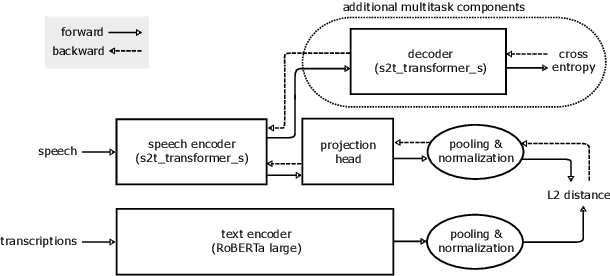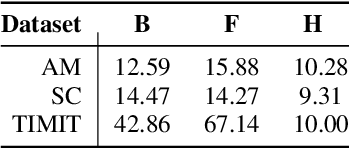Analysis of Joint Speech-Text Embeddings for Semantic Matching
Paper and Code
Apr 04, 2022



Embeddings play an important role in many recent end-to-end solutions for language processing problems involving more than one data modality. Although there has been some effort to understand the properties of single-modality embedding spaces, particularly that of text, their cross-modal counterparts are less understood. In this work, we study a joint speech-text embedding space trained for semantic matching by minimizing the distance between paired utterance and transcription inputs. This was done through dual encoders in a teacher-student model setup, with a pretrained language model acting as the teacher and a transformer-based speech encoder as the student. We extend our method to incorporate automatic speech recognition through both pretraining and multitask scenarios and found that both approaches improve semantic matching. Multiple techniques were utilized to analyze and evaluate cross-modal semantic alignment of the embeddings: a quantitative retrieval accuracy metric, zero-shot classification to investigate generalizability, and probing of the encoders to observe the extent of knowledge transfer from one modality to another.
 Add to Chrome
Add to Chrome Add to Firefox
Add to Firefox Add to Edge
Add to Edge